Recent Fire Damage Posts
Safeguarding Your Property: Fire Restoration Insights and Prevention Tips
12/17/2024 (Permalink)
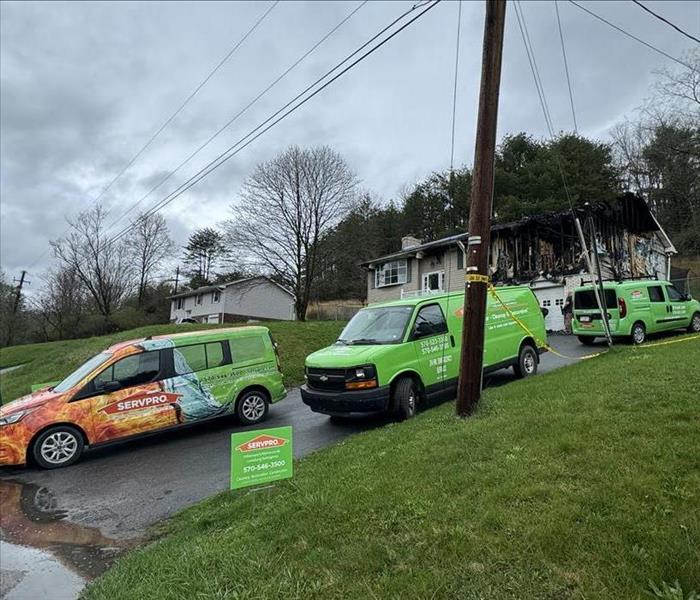 SERVPRO team residential fire restoration
SERVPRO team residential fire restoration
Safeguarding Your Property: Fire Restoration Insights and Prevention Tips
This year, our team at SERVPRO® of Williamsport Montoursville and Lewisburg Selinsgrove has worked tirelessly to help dozens of homeowners and business owners recover from the devastating effects of fire. It’s our mission to restore properties and peace of mind after such traumatic events. But as much as we are here to help rebuild, we are even more passionate about helping you prevent fires from happening in the first place.
Lessons Learned from Fire Restoration
Every fire we’ve restored this year has taught us something new about safety, preparedness, and resilience. One thing remains constant: fires are unpredictable and can happen to anyone. The emotional and financial toll of fire damage is immense, but the good news is that many fires are preventable. Taking proactive steps now can make all the difference in keeping your loved ones and property safe.
Are Your Smoke Detectors Ready to Save Lives?
Smoke detectors are your first line of defense against fires. According to safety experts, you should have at least one smoke detector in every bedroom and on every level of your home. However, having the devices isn’t enough; they need to be maintained. Here’s how to ensure your smoke detectors are working properly:
- Test them monthly. Press the test button to ensure the alarm is functioning.
- Replace the batteries twice a year. A good reminder is to do this when you adjust your clocks for daylight saving time.
- Upgrade if necessary. If your smoke detectors are more than 10 years old, replace them to ensure reliability.
Develop and Practice a Family Fire Escape Plan
A fire escape plan can save lives, but only if everyone in your household knows and practices it. Here’s how to create a plan:
- Map out your exits. Identify at least two ways out of every room in your home, typically a door and a window.
- Check your windows. Ensure that all windows can be opened easily and aren’t painted shut or obstructed.
- Designate a meeting spot. Choose a safe location outside your home where everyone can gather.
- Practice regularly. Conduct fire drills with your family at least twice a year. Make sure everyone knows how to open windows and use escape ladders if needed.
- Teach fire safety. Discuss with family members how to stay low to the ground to avoid smoke and how to test doors for heat before opening them.
Protect Your Property and Loved Ones
While we hope you never have to face the aftermath of a fire, we are always here to help if you do. From smoke damage restoration to complete structural rebuilding, [Your Restoration Company Name] is your trusted partner in recovery.
Let’s work together to prevent fires and keep our community safe. Take time this week to check your smoke detectors, review your family escape plan, and ensure your home is as fire-ready as possible. A few minutes of preparation today can save lives and prevent heartache tomorrow.
If you’d like more fire prevention tips or have questions about our fire restoration services, contact us anytime. Together, we can safeguard your home, business, and loved ones.
Recovering After a Home Fire: Crucial Mitigation Steps and the Value of SERVPRO Restoration
11/19/2024 (Permalink)
Experiencing a home fire is a traumatic event, often leaving homeowners feeling overwhelmed by the physical and emotional aftermath. Knowing the key steps to take immediately after the fire can significantly impact the speed and success of recovery. One of the most critical decisions during this process is choosing a professional restoration company like SERVPRO®, especially one experienced in navigating insurance claims. Here's why.
Immediate Steps After a Fire
Ensure Safety First
Once the fire is extinguished, ensure everyone is safe and accounted for. Avoid entering the property until the fire department deems it safe to do so. Structural damage or lingering hazards, such as smoke and ash, can pose significant risks.
Contact Your Insurance Company
Notify your insurance provider as soon as possible. Initiating a claim early helps streamline the process of assessing damages and arranging for coverage.
Document the Damage
If it's safe to enter your home, take photographs and videos of the affected areas to document the damage. This documentation is essential for insurance claims and helps ensure proper compensation for losses.
Prevent Further Damage
Fires can leave properties vulnerable to secondary damages such as water intrusion (from firefighting efforts) and mold growth. Tarping roofs, sealing windows, and removing standing water are essential measures to prevent further harm to your home.
The Role of Professional Restoration Companies
While it may be tempting to tackle some tasks on your own, working with a professional restoration company offers several key benefits:
Specialized Expertise
Fire damage isn’t just about burnt walls and furniture—it includes hidden issues like smoke odors, soot residue, and water damage. Restoration professionals use advanced equipment and techniques to address these problems comprehensively, ensuring a safe and thorough cleanup.
Efficient Recovery
Time is critical when dealing with fire damage. Restoration companies can rapidly assess the situation and deploy resources to mitigate the effects of the fire, reducing the risk of further structural or environmental damage.
Insurance Coordination
Dealing with insurance claims can be daunting. Professional restoration companies experienced in insurance coordination act as advocates for homeowners, ensuring all necessary documentation is submitted and claims are processed efficiently. Their familiarity with insurance policies can also help identify additional coverage opportunities, potentially reducing out-of-pocket expenses.
Stress Reduction
The aftermath of a fire can be emotionally draining. Having a trusted team manage the restoration process allows homeowners to focus on personal recovery and rebuilding their lives.
Why Expertise Matters
Choosing a restoration company with proven expertise ensures your home is restored to its pre-fire condition with minimal complications. These professionals know how to handle both the technical aspects of restoration and the bureaucratic challenges of insurance claims, providing peace of mind during a stressful time.
In conclusion, after a home fire, every decision matters. Prompt action, coupled with the support of an experienced restoration company, can make the recovery process smoother, faster, and less stressful. Prioritize safety, act swiftly, and trust the professionals to help rebuild your home and your sense of security.
After the Flames: Navigating the Differences in Fire Damage Restoration for Homes and Commercial Properties
11/16/2023 (Permalink)
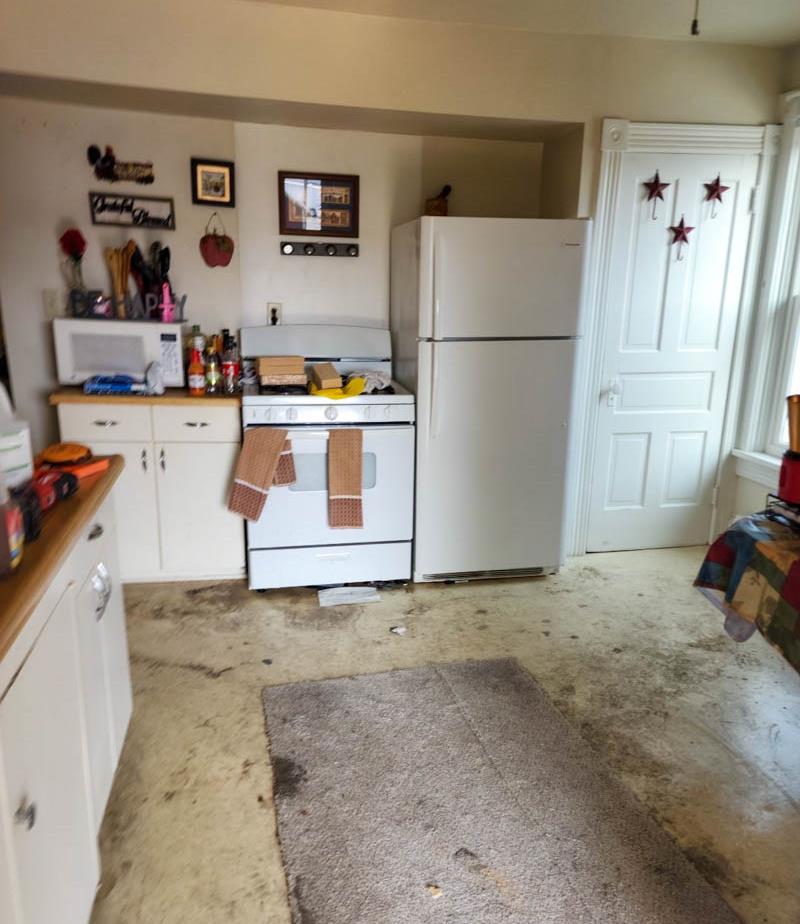 Call the professionals at SERVPRO for your fire damage restoration services.
Call the professionals at SERVPRO for your fire damage restoration services.
Fire damage restoration services are essential after a fire outbreak in a home or a commercial property. These services involve cleaning up and repairing damage caused by the fire and restoring the affected property to its pre-fire condition. However, the restoration process may differ significantly when dealing with fire damage in homes versus commercial properties. In this blog, we will explore the main differences in fire damage restoration for homes versus commercial properties and highlight what property owners need to know.
Type of Property Damage
When it comes to property damage, commercial properties often suffer more extensive damage than homes. This is due to the larger size and complex structural features of commercial properties. Commercial properties may have extensive HVAC and electrical systems, which increases the risk of fire damage to these systems.
Time and Resources Required
Restoration services for commercial properties require more resources and time than those for homes. Commercial properties have more significant amounts of content and inventory, making it more challenging to evaluate and restore the premises. Commercial properties require a more complex restoration strategy and typically require multiple specialists working on the task.
Inspection Process
The inspection process differs for homes and commercial properties. Home inspections are usually more straightforward, requiring fewer steps than inspections for commercial properties. Commercial properties require a more comprehensive inspection process to identify the extent of damages and develop an appropriate restoration plan.
Insurance Coverage
The insurance coverage for fire damage in homes versus commercial properties is quite different. Commercial properties have a more complex insurance coverage structure as they typically involve more significant financial risks. Commercial property insurance policies are more comprehensive and may have unique requirements and limitations that homeowners' policies may not have.
Work Safety Concerns
Commercial property restoration work poses more significant safety concerns than home restoration work. Commercial properties have a higher chance of structural damage, making the restoration work more dangerous, especially when working at heights.
In conclusion, the differences in fire damage restoration for homes and commercial properties are significant. The scope, time, and resources required to restore a commercial property exceeds that of a home. Engaging licensed and experienced restoration services is essential for both types of properties, ensuring that the damages are thoroughly addressed, and the property is restored to its pre-fire condition. Property owners should work with their service providers to establish a suitable restoration plan that accounts for the unique needs of their property type.
Reduce Space Heater Fires: Keeping Your Home Safe and Warm in the Fall and Winter Months
8/15/2023 (Permalink)
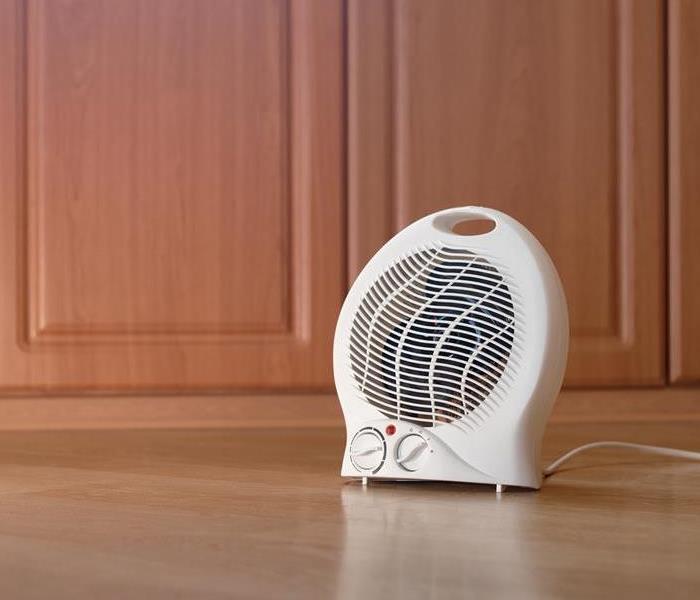 Prevent space heater fires by ensuring you take proper precautions and use responsibly.
Prevent space heater fires by ensuring you take proper precautions and use responsibly.
Space heaters provide a convenient way to warm up a room during the cold winter months. However, if not used properly, they can pose a serious fire hazard. To ensure the safety of your home and loved ones, it is essential to follow some important tips to reduce space heater fires. In this blog post, we will share seven valuable tips to help keep your home safe and warm.
Keep a Safe Distance
Always maintain a safe distance between your space heater and any flammable objects. Experts recommend keeping a minimum distance of three feet between the heater and items such as curtains, furniture, bedding, papers, and other combustible materials. Avoid placing the space heater near anything that can easily catch fire.
Place the space heater on a stable and level surface to minimize the risk of it tipping over. Avoid placing it on uneven surfaces, carpets, or rugs. A stable surface will ensure that the heater remains steady and decreases the chances of it accidentally falling and causing a fire.
Never leave a space heater unattended, especially when it is in use. If you need to leave the room or go to sleep, turn off the heater. It is important to always be present and aware of its operation to prevent any potential fire hazards.
Avoid fire
Avoid connecting space heaters to extension cords or power strips. It is best to plug the heater directly into a wall outlet to prevent overheating and potential electrical fires. If you find that you need an extension cord to reach the outlet, ensure that it is an appropriate cord rated for the wattage of your space heater.
Regularly inspect and maintain your space heater to ensure its proper functioning and safety. Clean the heater regularly by removing dust and debris that may accumulate over time. Additionally, check for any signs of damage such as frayed wires or loose connections. If you notice any issues, it is best to have the heater repaired or replaced.
Choose a space heater with a built-in thermostat and timer. These features allow you to regulate the temperature and duration of operation, minimizing the risk of overheating. By setting a temperature limit and a timer, you can ensure that the heater shuts off when it reaches a certain temperature or after a specific period of time.
Smoke Alarms and Fire Extinguishers
In addition to following these safety tips, it is important to have working smoke alarms installed throughout your home. Test them regularly to ensure they are functioning properly. Furthermore, keep a fire extinguisher nearby in case of an emergency. Make sure you know how to properly use the extinguisher and keep it readily accessible.
By following these seven tips, you can significantly reduce the risk of space heater fires in your home. Remember, safety should always be a top priority when using space heaters. With proper precautions and responsible usage, you can enjoy the warmth and comfort of a space heater while keeping your home and loved ones safe from the threat of fire. Stay warm, stay safe!
Top 5 Signs of a Faulty Fire Sprinkler System
8/14/2023 (Permalink)
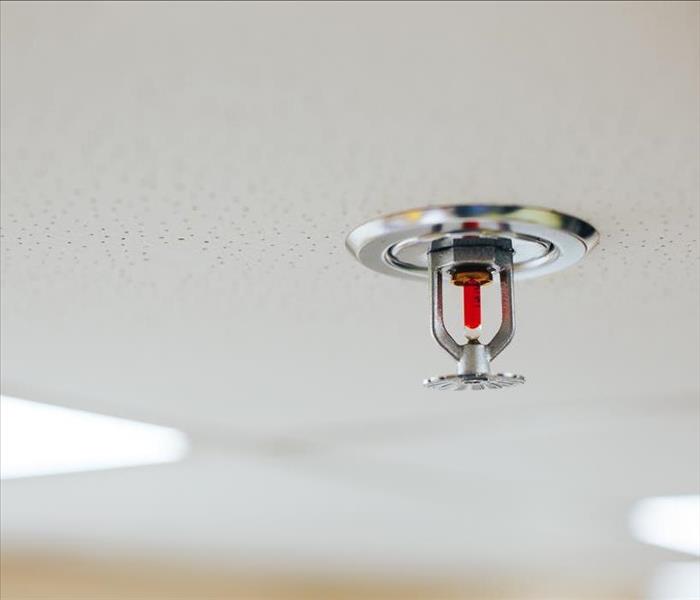 Like any mechanical system, fire sprinklers can experience faults and malfunctions over time.
Like any mechanical system, fire sprinklers can experience faults and malfunctions over time.
When it comes to safeguarding your home and loved ones, a properly functioning fire sprinkler system plays a crucial role. However, like any mechanical system, fire sprinklers can experience faults and malfunctions over time, potentially compromising their effectiveness in the event of a fire. In this article, we will explore the signs that indicate a faulty fire sprinkler system. By being aware of these signs and taking proactive measures, you can ensure that your home's fire protection system is always ready to act when it matters most.
Inadequate water pressure or flow
One of the primary indicators of a faulty fire sprinkler system is inadequate water pressure or flow. If you notice a decrease in water pressure throughout your home or experience weak water flow from faucets and showers, it may indicate an issue with the sprinkler system. Insufficient pressure or flow can impair the sprinklers' ability to effectively extinguish a fire, putting your property at risk.
Leaks or visible signs of corrosion
Regularly inspect your fire sprinkler system for leaks or signs of corrosion. Leaking water around sprinkler heads, pipes, or fittings can be a clear indication of a problem. Corrosion, often characterized by rust or discoloration, weakens the system's structural integrity and can lead to leaks or even pipe bursts. Any signs of leakage or corrosion should be promptly addressed by a qualified professional.
Obstructed sprinkler heads
A key aspect of maintaining a functional fire sprinkler system is ensuring that sprinkler heads remain unobstructed. Over time, dust, debris, or accidental damage can obstruct or block the sprinkler heads, rendering them ineffective during a fire emergency. Regularly check the sprinkler heads to ensure they are free from any obstructions. If you notice anything blocking or impairing their coverage, contact a professional to address the issue promptly.
Alarms or control panel malfunctions
Your fire sprinkler system is typically integrated with an alarm and control panel. Malfunctions in these components can be a sign of a faulty system. Pay attention to any false alarms, failure to activate during testing, or issues with the control panel display. These could indicate electrical problems, faulty wiring, or sensor failures, all of which require immediate attention from a trained technician.
Outdated or inadequate system design
If your fire sprinkler system was installed many years ago or does not comply with current building codes and standards, it may be considered outdated or inadequate. Technological advancements in fire safety have led to more efficient sprinkler systems with enhanced features. If you suspect your system is outdated, it's advisable to consult with a professional to assess its effectiveness and consider upgrading to a more advanced system.
Recognizing the signs of a faulty fire sprinkler system is essential for maintaining the safety of your home and property. Regular inspections, prompt repairs, and necessary system upgrades are vital to ensure that your fire sprinklers are fully functional when you need them most. If you notice any of the signs discussed in this article, don't hesitate to seek professional assistance. By staying vigilant and proactive, you can have peace of mind, knowing that your fire sprinkler system is reliable and capable of protecting your home and loved ones in the event of a fire.
Creating and Practicing a Fire Home Escape Plan: Steps to Keep Your Family Safe
4/14/2023 (Permalink)
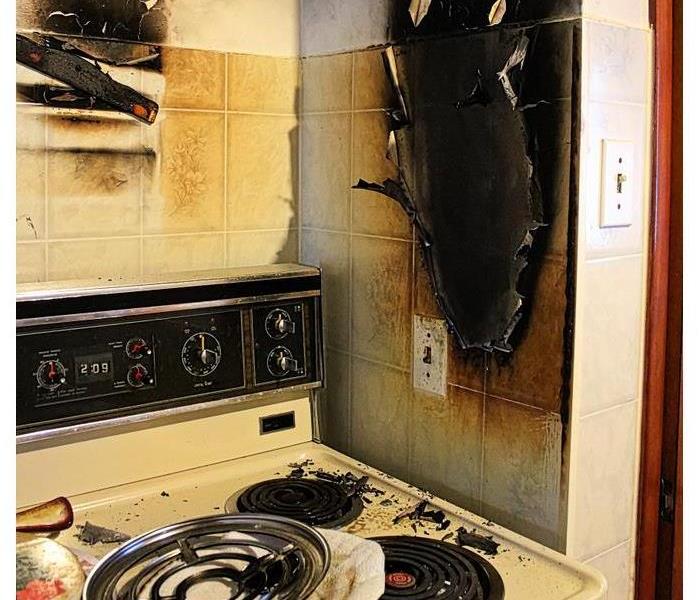 By following these steps, you can be better prepared for an emergency situation and keep your family safe.
By following these steps, you can be better prepared for an emergency situation and keep your family safe.
A home fire can be a terrifying and life-threatening event, with little time to react and escape. That's why it's crucial to have and practice a home fire escape plan. A fire can happen at any time, and having a plan in place can mean the difference between life and death. Here are some reasons why it's important to have and practice a home fire escape plan.
Time is of the essence
In the event of a fire, every second counts. Having a fire escape plan in place can help you act quickly and efficiently, reducing the risk of injury or death. A well-practiced plan can help you navigate your home and get out safely.
Fire can spread quickly
Fires can spread rapidly, making it difficult to escape. Having a plan in place that includes multiple escape routes can help you get out of your home quickly and safely. It's essential to know all possible exits and to have a designated meeting place outside of your home.
Smoke can be deadly
In many cases, smoke inhalation is the leading cause of death in a fire. Smoke can quickly fill a room, making it difficult to see and breathe. Having a fire escape plan that includes crawling low to the ground can help you avoid smoke and get out safely.
Children and elderly
Children and elderly family members may need extra assistance in the event of a fire. Having a fire escape plan in place that takes into account any special needs can help everyone in your household get out safely.
Peace of mind
Knowing that you have a plan in place can provide peace of mind and help reduce anxiety. Practicing your plan regularly can also help build confidence in your ability to react calmly and quickly in an emergency.
Creating an Escape Plan
A fire home escape plan is a detailed plan that outlines the steps you and your family members should take in the event of a fire. It is important to have an escape plan in place because when a fire occurs, time is of the essence and every second counts. Below are some steps to help you create and practice your fire home escape plan.
Step 1: Draw a Map of Your Home
The first step in creating a fire home escape plan is to draw a map of your home. This map should include all the rooms in your home, including the windows and doors. Make sure to mark two ways out of each room, including which windows and doors to use.
Step 2: Determine a Meeting Place
The next step is to determine a meeting place for your family members. This should be a safe location outside of your home, such as a neighbor's house or a designated location in your yard. Make sure everyone knows where the meeting place is.
Step 3: Install Smoke Detectors
Install smoke detectors throughout your home, making sure to place them on every level of your home and inside each bedroom. Test them regularly and replace the batteries twice a year.
Step 4: Practice Your Plan
Practice your fire home escape plan with your family members. Have everyone go through the steps of the plan, including getting out of the house and meeting at the designated location. Practice different scenarios, such as a fire starting in a different room or in the middle of the night.
Step 5: Review and Update Your Plan
Review and update your fire home escape plan regularly. Make sure everyone is aware of any changes and that the plan is still relevant for your home and family.
In conclusion, having a fire home escape plan is crucial for the safety of you and your family members. A well-thought-out plan can save lives and reduce the chances of injury. Remember to draw a map of your home, determine a meeting place, install smoke detectors, practice your plan regularly, and review and update your plan. By following these steps, you can be better prepared for an emergency situation and keep your family safe.
Step-by-step Guide to the Fire Restoration Process
2/15/2023 (Permalink)
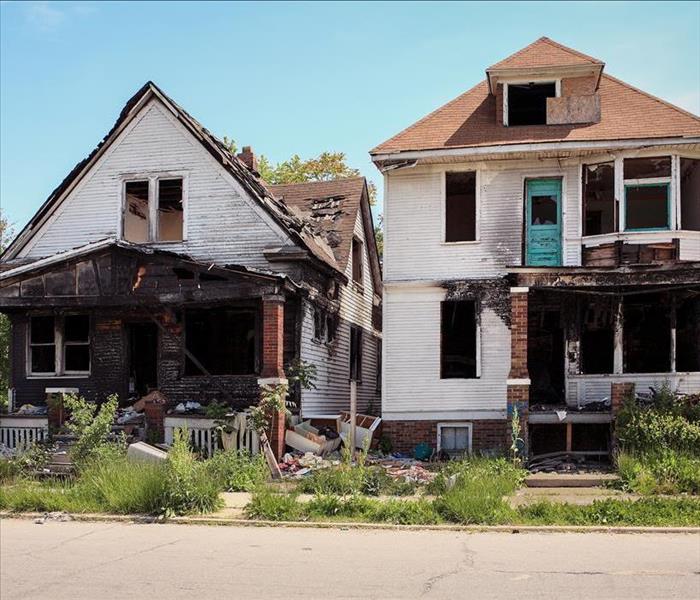 With professional help, it's possible to get your home back on track in no time at all after a fire.
With professional help, it's possible to get your home back on track in no time at all after a fire.
A fire is one of the most devastating things that can happen to a homeowner. It can completely destroy your property and even lead to life-threatening situations. However, with professional help and a well-executed fire restoration process, it's possible to get your home back on track in no time at all. Here's what the average fire restoration process looks like.
Call the Experts
Once the flames have been put out, the first step in the fire restoration process is to call in the experts. A qualified professional will assess the damage, determine how much damage has been done and give you an estimate of what it will cost to fix it. They'll also make sure that their equipment is up to snuff and that they have the manpower necessary to tackle the job.
Contact Your Insurance Company
Next, it's time to contact your insurance company. Give them all the necessary information about your claim and ask for a copy of your policy so that you can review it later. Your restoration company will also handle this process for you if they are involved with restoring damaged property. They also know how to handle insurance claims and will work with your insurance company through the claim so that you can get paid as quickly as possible without having any problems along the way.
Water Extraction
Water extraction is the removal of water from a property. The accumulation of water can be due to fire suppression systems or firefighting efforts.
Water removal is the first step of the actual mitigation and restoration process as it is one of the most important steps. Removing the moisture as quickly as possible after a loss is important in order to avoid further, unnecessary damage to your property. The equipment used for this process varies depending on the size of your home and how long it's been since the fire occurred.
Debris Removal
After the fire, your property will be filled with debris. This includes:
- All damaged materials and furniture
- All damaged walls and ceilings
- All damaged insulation
- Any destroyed or damaged appliances
- Any personal property that has been damaged, such as clothing, jewelry, and electronics
Soot and Smoke Removal
Soot and smoke removal is the next step of fire restoration. This process removes soot and smoke stains from walls, ceilings, floors, and other surfaces. Soot removal can be accomplished by using specialized equipment to remove any soot and smoke that may still be present in your home.
If you have experienced a fire in your home or business building it is important to make sure that all areas are completely cleaned before moving forward with any repairs or reconstruction work. It's also important to note that professional cleaning services should always be used when performing this type of work because they will ensure proper results while reducing the risk of spreading contaminants throughout other rooms in your house or office building.
Restoration
Restoration is the process of making your property look like it did before the fire. Restoration is the most important part of the fire restoration process and will take place after the mitigation has been completed. If you are unsure about what to do next in restoring your home, we would be happy to help!
This step can take anywhere from several weeks up to several months depending on how extensive repairs were needed.
A well-executed fire restoration process can help get your property back to normal. It is important to know what to expect from this process and how long it will take before repairing your home or business after a fire. The steps we outlined above should give you a better idea of what goes into restoring damaged property after an incident like this one occurs. We hope this guide has been helpful for those who are looking for information about the fire restoration process!
How Often Should You Service Your Furnace?
8/27/2022 (Permalink)
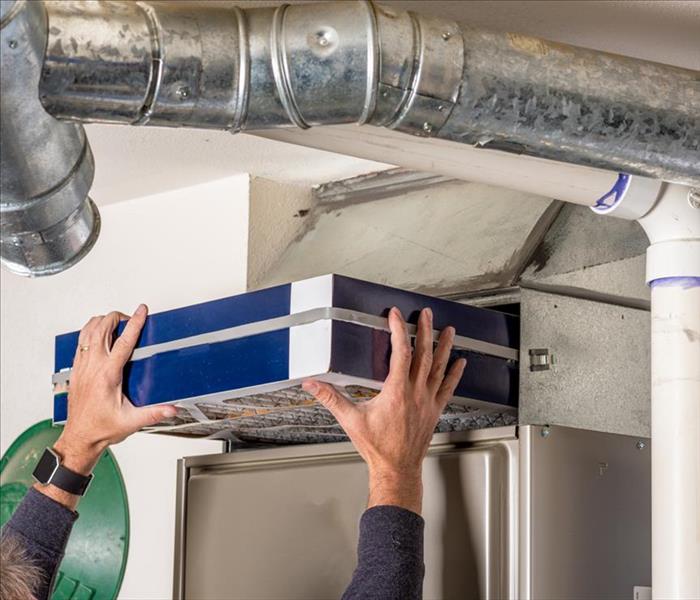 Properly service your furnace
Properly service your furnace
How Frequently Should Your Furnace Be Serviced?
When cooler weather comes in Montoursville, PA, you'll be grateful for a properly functioning furnace. However, if you neglect routine maintenance and upkeep, your furnace won't do a good job of keeping you warm. Worse, problems could arise that could lead to fires. To avoid fire cleaning and other disaster mitigation, you need to properly service your furnace.
1. Replace the Filters Regularly
Your furnace relies on an air filter to work efficiently. The filter will keep dust, dirt and other debris from getting into the appliance and hampering airflow and other performance issues. Too much buildup can also cause fires. To avoid fire cleaning and an inefficient system, make sure you replace the filters often.
2. Have an Annual Inspection
Sometimes, you can pinpoint signs that your furnace is acting up and needs some repairs. But often, problems start small and are difficult to detect unless you take a closer look at the unit. This is a job that a professional can handle. At least once a year, call a heating and air conditioning technician to inspect your furnace. This will give you peace of mind. Also, the technician can identify areas that you need to address before they get worse.
3. Act Immediately When There Are Problems
Pay attention to your furnace and indications that it may not be performing well. If the air coming out is not warm or if the airflow is weak, you need a professional to service it. Also, pay attention to odd sounds or smells coming from the unit or the vents. Don't delay in calling for help. This will allow you to avoid having to call a professional fire mitigation company for smoke cleaning.
Fire cleaning can be expensive and stressful. If you keep up with furnace maintenance, you can reduce the risk of fires and poor HVAC performance.
4 Fire Safety Tips To Keep In Mind When Grilling
8/27/2022 (Permalink)
 Remember to grill away from the HVAC intake system or your home may smell like BBQ for a long time
Remember to grill away from the HVAC intake system or your home may smell like BBQ for a long time
When Grilling, Consider These Four Fire Safety Tips
Cooking a great meal on the barbeque is a staple for many homes. However, it's important to understand how to safely operate a grill in order to avoid a home fire. Here are four essential tips to employ in your Loyalsock, PA, home to avoid a grill fire.
1. Inspect Gas Grill for Leaks
If you have a gas grill, it's important to check it before every use and make sure there is no gas leaking. Always be wary of the smell of propane gas while grilling, as this could soon turn into a dangerous grill fire.
2. Be Mindful of Proper Charcoal Grill Practices
Like gas grills, charcoal grills also require safety measures. When lighting one up, don't overuse any starter fluid. Subsequently, never add charcoal fluid or any other flammable liquids once flames have been established. Take caution after use as well and let coals cool entirely before disposing them into a metal container.
3. Place Barbeque Away From Home
Keeping your grill too close to your home is not advised. Doing so not only risks the chance of a home fire but will likely result in smoke damage on the exterior of the house. If this occurs, a fire damage restoration company will likely need to intervene to clean the smoke and repair any damage.
4. Always Clean After Cooking To Avoid a Grill Fire
More often than not, a barbeque fire will spark due to the grease and burnt residue that remains after previous use. Always scrape away this residue from the grill grates as well as the underneath tray to best avoid out-of-control flames the next time you cook.
Keep your barbequing safe from fire hazards by checking for leaks on a propane grill, knowing the best practices for a charcoal grill, cooking away from the house and always cleaning the grill after use.
How To Remove Cigarette Smoke From Your Home
8/11/2022 (Permalink)
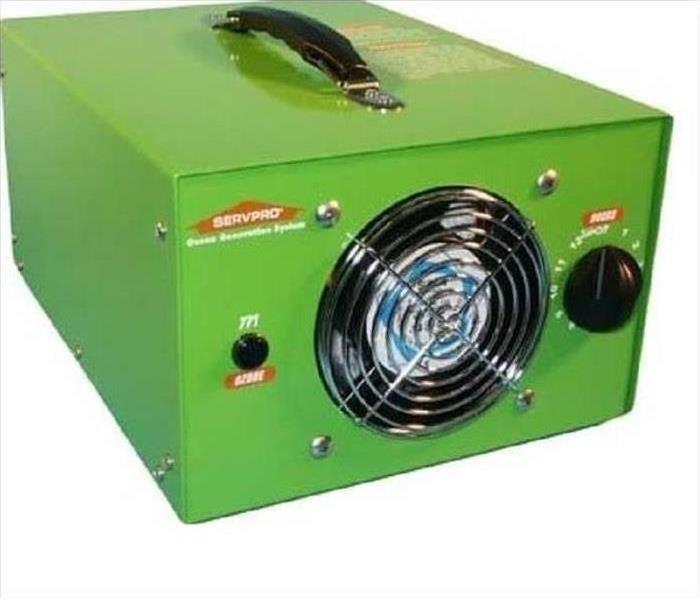 A popular method of home deodorization is ozone generation.
A popular method of home deodorization is ozone generation.
How To Get Rid Of Cigarette Smoke In Your House
If your Williamsport, PA, home has a lingering smoke smell from cigarettes, home deodorization can be tricky. Smoke particles travel far and are difficult to remove. Fortunately, there are reliable odor removal techniques. One popular option is ozone generation.
Cigarette Smoke Odor
Thirdhand smoke is when chemicals and odors from cigarettes linger in the air or on surfaces. Eliminating this entirely can be tricky because the emissions from cigarettes tend to adhere strongly to surfaces. The following are some of the many chemicals released with cigarette smoke:
- Tar
- Carbon monoxide
- Formaldehyde
- Ammonia
Many individuals find the odor of thirdhand smoke unpleasant, so getting rid of it can make your home more enjoyable for you, your family, guests and even potential buyers.
Ozone Generation
A popular method of home deodorization is ozone generation. Ozone is a reactive compound that has three molecules of oxygen. Normal ambient air has two oxygen molecules, and ozone has three. Ozone generators take normal air and apply an electrical charge to create ozone. The extra oxygen molecules created react with the smoke particles in the area to create a new compound that does not have a smokey smell. A professional restoration service knows how to properly run these machines and air out the space afterward so that occupants return to a safe, non-smoky environment.
Other Deodorization Methods
Ozone generation can be combined with other deodorization techniques to produce even better results. Scrubbing hard surfaces with a mixture of water and white vinegar removes the buildup of tar and nicotine. White vinegar can also be added to washing machines to deodorize washable fabrics.
Whether you have recently quit smoking or just moved into the former home of a smoker, getting rid of the lingering smell is likely to be difficult. Fortunately, using ozone for home deodorization has proven effective in many cases.
Dryer Vent Fire Prevention
4/11/2022 (Permalink)
As a homeowner or business owner, it is imperative that you are aware of, and perform, the preventative maintenances that help keep your property safe. One of the lesser known maintenances is to keep your dryer vents lint free. Here are some tips to keep your dryer working efficiently and to reduce your risk of a lint fire:
- Regular Dryer Maintenance- Make sure that you clean your dyer's lint filter after every use. Quarterly you should clean out any built-up lint where the filter is housed and as well from your dryer into your vent pipe.
- Outside Dryer Vent- Remove the cover over the access to where your dryer vent is piped outside. Check that the cover is free of debris, and clean inside the exhaust to ensure that there are no nests or lint build up.
- Pay Attention to Warnings From Your Appliance- Any unusual noises or smells, as well as longer than usual drying times, need to be handled handled by a professional repair person that is qualified for your specific appliance.
Call SERVPRO of Williamsport/Montoursville for your dryer vent cleaning today!
Clogged Dryer Vents Can Cause Fire
4/5/2022 (Permalink)
As a homeowner or business owner, it is imperative that you are aware of, and perform, the preventative maintenances that help keep your property safe. One of the lesser known maintenances is to keep your dryer vents lint free. Here are some tips to keep your dryer working efficiently and to reduce your risk of a lint fire:
- Regular Dryer Maintenance- Make sure that you clean your dyer's lint filter after every use. Quarterly you should clean out any built-up lint where the filter is housed and as well from your dryer into your vent pipe.
- Outside Dryer Vent- Remove the cover over the access to where your dryer vent is piped outside. Check that the cover is free of debris, and clean inside the exhaust to ensure that there are no nests or lint build up.
- Pay Attention to Warnings From Your Appliance- Any unusual noises or smells, as well as longer than usual drying times, need to be handled handled by a professional repair person that is qualified for your specific appliance.
Call SERVPRO of Williamsport/Montoursville for your dryer vent cleaning today!
Red Cross Fire FAQs
1/22/2022 (Permalink)
Fires in homes are one of the leading calls we get from customers this time of year. SERVPRO of Williamsport/Montoursville wants you to have this information from the Red Cross in order to hopefully prevent this from happening. See some important facts below:
When do home fires happen?
Home fires can happen at any time, but they generally increase during the fall and winter, with December and January being the peak months. Home fires are also more common on Saturday and Sunday, and tend to peak between 6:00 and 7:00 PM.
Where are home fires most likely to start?
Home fires are more likely to start in the kitchen than any other room in the home. The second leading cause of home fires are heating sources like wood stoves, and fireplaces. Fires caused by smoking are the leading cause of deaths.
Who are affected by home fires?
Home fires don’t discriminate and can affect any home at any time. However, children under five and adults over 65 face the highest risk of dying in a home fire
Find more information here: Red Cross Fire FAQs.
If you or someone you know experiences a fire in your home, call SERVPRO of Williamsport/Montoursville so we can help you!





 24/7 Emergency Service
24/7 Emergency Service







